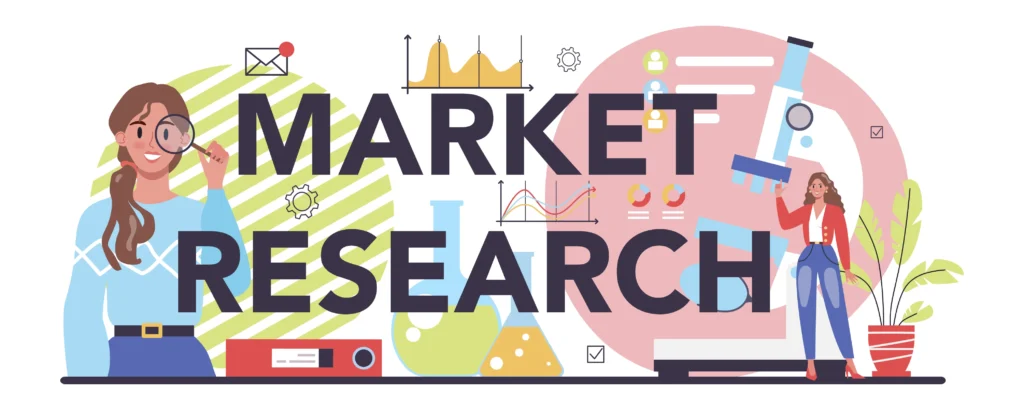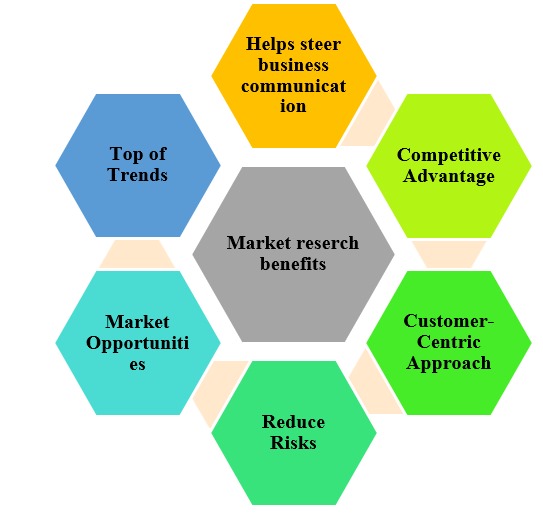Market Research
Better customer understanding

Why is Market Research Important?
Identifies Target Customers
Understand who your ideal customers are, what they need, and how they behave.Reduces Business Risks
Make informed decisions backed by data instead of relying on guesswork.Helps in Product Development
Discover what features or improvements your customers really want.Tracks Market Trends
Stay up-to-date with industry shifts, customer preferences, and new technologies
Primary Research :
– Information you gather yourself directly from your target audience.
Methods of Primary Research:
Surveys & Questionnaires
Collect responses through forms (online or offline) to understand customer preferences, opinions, and behavior.Interviews
One-on-one conversations—can be face-to-face, over the phone, or online. These provide deep insights into customer needs.Focus Groups
A small group of people from your target market are guided through a discussion about your product, service, or idea.Observation
Watch how consumers interact with products or services in real-time—often done in retail settings or online.Product Testing (Test Marketing)
Let a limited group of users try a new product or service before launching it to the public. Feedback helps improve the offering.
Pros of Primary Research:
Specific to your business needs
Up-to-date and relevant
Provides deeper insights
Cons:
Time-consuming
Can be expensive
Requires effort and planning
Secondary Research :
Research that uses data already collected and published by others.
Sources of Secondary Research:
Government Reports & Statistics
e.g., census data, economic reports, labor statisticsIndustry Reports
Published by research firms or business intelligence companiesAcademic Journals & Research Papers
Reliable for theoretical and in-depth analysisNews Articles & Media Publications
Useful for tracking market trends and eventsCompetitor Websites & Marketing Material
Analyze their offerings, pricing, messaging, and customer engagement
Pros of Secondary Research:
Cost-effective or free
Quick to access
Provides a broader market view
Cons:
May be outdated
Not always directly relevant to your specific business
Less control over the quality of data
Approach to Market Research

Define the Problem or Objective
What do you want to learn or solve? Are you launching a new product? Entering a new market? Trying to understand your customers?

Determine the Research Type
Primary Research – if you need original, specific data Secondary Research – if you want to analyze existing information Often, a mix of both is ideal

Collect the Data
What does the data tell us? Are there trends or customer preferences?

Make Decisions and Take Action
Improve marketing strategies Launch new products Adjust pricing or positioning Target the right audience more effectively

How Our Market Research Services Benefit Your Business
1. Make Smarter Business Decisions
We provide reliable, actionable data that helps you make informed decisions—whether you’re launching a new product, entering a new market, or refining your strategy.
2. Understand Your Target Audience
Our research reveals what your customers truly want—so you can align your products, messaging, and services with their needs and preferences.
3. Gain a Competitive Advantage
We help you analyze the competition, identify market gaps, and spot emerging trends—keeping your business one step ahead.
4. Minimize Risks
By understanding potential challenges and customer behavior beforehand, you reduce costly mistakes and increase the chances of success.
5. Improve Product Development
Through focus groups, surveys, and feedback analysis, we help you refine your product based on real customer insights—not assumptions.
6. Enhance Marketing Effectiveness
Know where, when, and how to market your product. We guide you in choosing the right channels, messaging, and timing.
7. Support Business Growth & Expansion
Thinking of scaling or entering new markets? We assess demand, customer demographics, and local trends to build a smart entry strategy.
8. Boost Customer Satisfaction
When you understand customer pain points and expectations, you can improve your offerings and build long-term loyalty.
